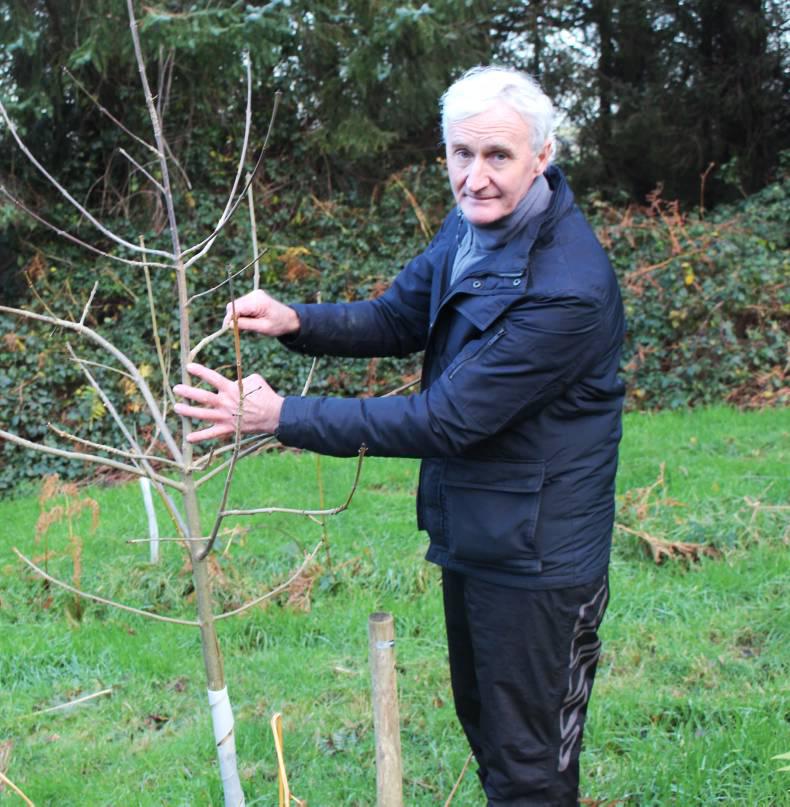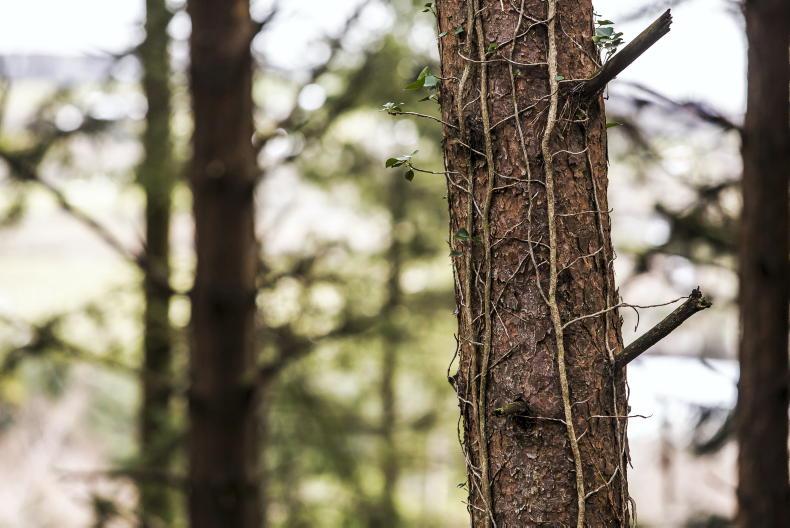The number of confirmed cases of ash dieback continues to increase throughout the island. The total number recorded so far is 308, comprising 195 in the Republic and 113 in Northern Ireland. The disease now known as Hymenoscyphus fraxineus is seen as a major threat to the survival of the native ash.
While the species is valued highly by furniture makers, these will be in a position to shift to other species should ash eventually be wiped out. Hurley makers don’t have the same option. Ash is the only species suitable for hurling as it combines strength and elasticity as well as having the required wood density or lightness of touch.
It was inevitable therefore that the GAA would be involved in the Ash Society, established in 2014 under the chairmanship of Minister of State Tom Hayes. The society is examining the various options in dealing with the disease including its likely effect on hurley making.
A million hurleys
About one million new hurleys are required annually in Ireland and, while two-thirds of these are imported, it was expected that Ireland would be self-sufficient by the mid 2020s due to an upsurge of ash planting from the 1990s. The disease has spread through a number of these plantations, which are being replaced with alternative species, so no ash planting has taken place since 2012 when the disease was first detected.
The Ash Society comprises the main stakeholders including the GAA, Forest Service, Teagasc, Coillte and the Guild of Irish Ash Hurley Makers. Pat Daly, who represents the GAA, is deeply concerned about the future of ash not just in Ireland but also in European countries, where the disease is rampant and where Irish hurley makers have sourced ash over the years, especially in Denmark. The Society has adopted a three-point plan to address the disease:
Genetic programme to identify and propagate disease-resistant ash species.Programme to maximise ash supply by using all commercial lengths and engineering the wood for hurley production.Research into a synthetic or hybrid hurley whereby ash can be combined with fibreglass or other material.A four-year project which will end in 2017 aims to produce disease-resistant species as outlined by Minister Hayes to the Senate last year. He also said that the Department is providing research funding to a UCD-led team to model the airborne spread of the disease. “Together with the University of Cambridge and the Forest Service, this project will assess the risk of ash dieback spread into and across Ireland,” Minister Hayes said.
Telltale signs
In the meantime, the public are being asked to report incidences of the disease. Although telltale signs of the disease such as foliage discoloration and excess epicormic branching won’t be obvious for another few months, the disease can be detected during the winter by examining ash for symptoms such as necrotic lesions and cankers along the bark of branches or main stem and brown, orange or purple discolouration of bark.
Forest owners, forest nursery staff and members of the public are asked to be vigilant and report the disease to the Forest Service by e-mail to forestprotection@agriculture.gov.ie or by phoning 01-607 2651.
All reports will be followed up by the Forest Service inspectorate. Nursery producers should direct queries to their local plant health inspector immediately.
Alternatively, queries can be sent by e-mail to plantandpests@agriculture.gov.ie, or contact 01-505 8885.
The number of confirmed cases of ash dieback continues to increase throughout the island. The total number recorded so far is 308, comprising 195 in the Republic and 113 in Northern Ireland. The disease now known as Hymenoscyphus fraxineus is seen as a major threat to the survival of the native ash.
While the species is valued highly by furniture makers, these will be in a position to shift to other species should ash eventually be wiped out. Hurley makers don’t have the same option. Ash is the only species suitable for hurling as it combines strength and elasticity as well as having the required wood density or lightness of touch.
It was inevitable therefore that the GAA would be involved in the Ash Society, established in 2014 under the chairmanship of Minister of State Tom Hayes. The society is examining the various options in dealing with the disease including its likely effect on hurley making.
A million hurleys
About one million new hurleys are required annually in Ireland and, while two-thirds of these are imported, it was expected that Ireland would be self-sufficient by the mid 2020s due to an upsurge of ash planting from the 1990s. The disease has spread through a number of these plantations, which are being replaced with alternative species, so no ash planting has taken place since 2012 when the disease was first detected.
The Ash Society comprises the main stakeholders including the GAA, Forest Service, Teagasc, Coillte and the Guild of Irish Ash Hurley Makers. Pat Daly, who represents the GAA, is deeply concerned about the future of ash not just in Ireland but also in European countries, where the disease is rampant and where Irish hurley makers have sourced ash over the years, especially in Denmark. The Society has adopted a three-point plan to address the disease:
Genetic programme to identify and propagate disease-resistant ash species.Programme to maximise ash supply by using all commercial lengths and engineering the wood for hurley production.Research into a synthetic or hybrid hurley whereby ash can be combined with fibreglass or other material.A four-year project which will end in 2017 aims to produce disease-resistant species as outlined by Minister Hayes to the Senate last year. He also said that the Department is providing research funding to a UCD-led team to model the airborne spread of the disease. “Together with the University of Cambridge and the Forest Service, this project will assess the risk of ash dieback spread into and across Ireland,” Minister Hayes said.
Telltale signs
In the meantime, the public are being asked to report incidences of the disease. Although telltale signs of the disease such as foliage discoloration and excess epicormic branching won’t be obvious for another few months, the disease can be detected during the winter by examining ash for symptoms such as necrotic lesions and cankers along the bark of branches or main stem and brown, orange or purple discolouration of bark.
Forest owners, forest nursery staff and members of the public are asked to be vigilant and report the disease to the Forest Service by e-mail to forestprotection@agriculture.gov.ie or by phoning 01-607 2651.
All reports will be followed up by the Forest Service inspectorate. Nursery producers should direct queries to their local plant health inspector immediately.
Alternatively, queries can be sent by e-mail to plantandpests@agriculture.gov.ie, or contact 01-505 8885.











SHARING OPTIONS